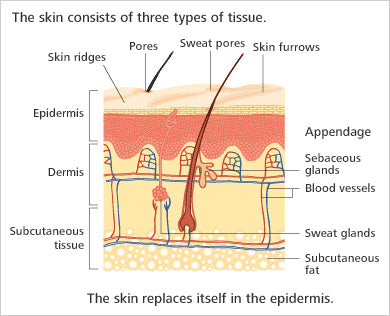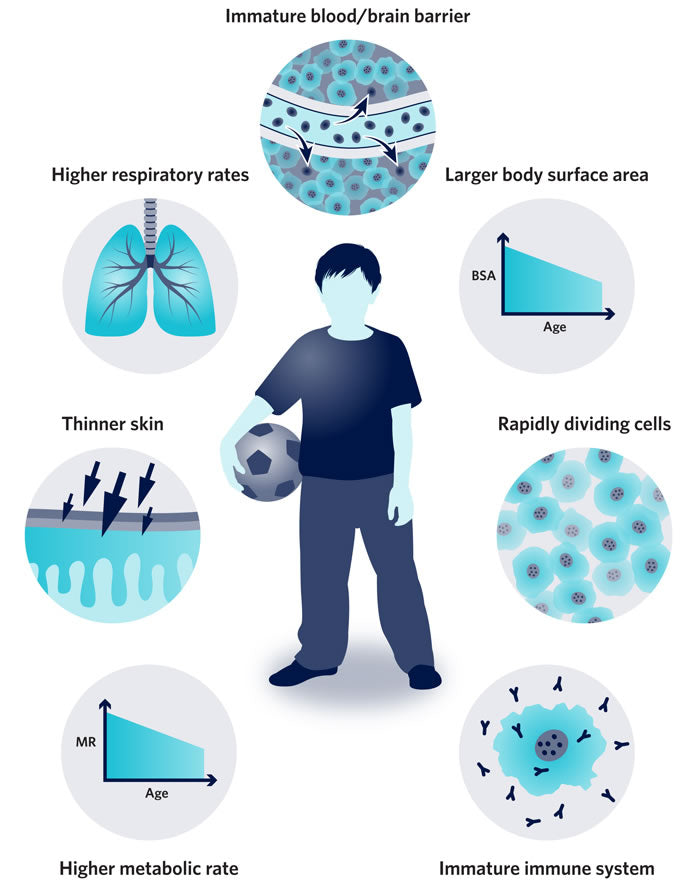What are the structural and functional differences between baby, kid, teen and adult skin?

There are structural and functional differences between baby, kid, teen, and adult skin. A baby’s skin is fully developed, but is very sensitive and fragile. Kids’ skin is equally sensitive and fragile. Differences in skin structure contribute to the fragility of baby and child skin as opposed to the durability of adult skin. Made up of different kinds of cells, the epidermis is the outermost layer of the skin. The dermis is the middle layer of the skin and basically consists of connective tissues. The epidermis is 20-30% thinner in babies and children and therefore much less resilient than adult skin. Additionally, the epidermis and the dermis are loosely attached together compared to the tightly sealed epidermis and dermis of an adult — meaning that their young skin is more susceptible to environmental factors and hydration issues than an adult.

Functionally, skin is meant to be a barrier between the outside world and the insides of one’s body. Some of these functions can include acting as a physical barrier (a thermal protector), a chemical barrier (keeping pollutants out of the skin and body), and a biological barrier (protection against microbes and allergens). A child’s skin is thinner and has a higher body surface area, so it more easily absorbs toxins; therefore, natural, safe products should be used. As it is still developing, children’s skin requires more protection to prevent moisture loss. Children’s skin is almost always overlooked when discussing skin needs and care. Unless children have a specific skin condition, such as eczema, their needs are brushed over and forgotten. There is a jump from baby to teen research, which usually focuses on acne, completely overlooking the children in between. Children and teens tend to be grouped in the same category even though their skin is quite different. Many teens begin to develop acne that young children simply do not have yet. Acne products do not assist with the protection and care of children’s skin. While not as big of a difference as between baby and adult skin, child and teen skin is different. In each stage of life, different skin care products and remedies are needed to keep skin healthy and happy!
http://www.medscape.org/viewarticle/743529
http://www.differencebetween.net/science/health/difference-between-epidermis-and-dermis/
http://www.theguardian.com/fashion/fashion-blog/2011/dec/20/baby-skincare
Newsletter
Sign Up For Our Newsletter & Get the Latest Information
This article is intended solely for informational purposes and should not be considered a source of medical advice. The information presented in this article is not a replacement for, nor should it be relied upon as, professional medical guidance. Every individual’s health and medical circumstances are unique. What works or is suitable for one person may not be the same for another. Any decisions related to your health should be made with consideration of your specific health condition, medical history, and the guidance of your healthcare professional.
